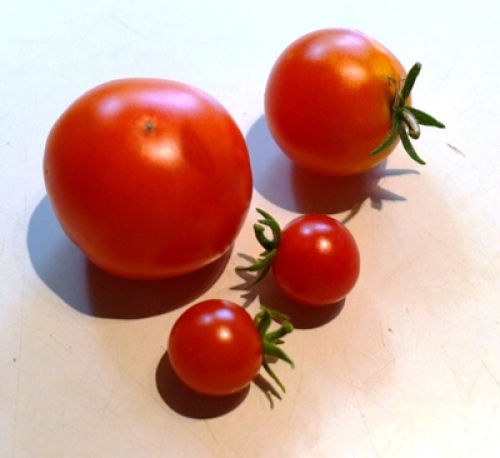
Wild tomatoes started out as small berries growing on bushes somewhere in South America. Some food historians believe the plants took root along the warm coastal regions of Ecuador and Peru. Others think the plants and fruits were first found growing in the Andes Mountains.
Long before the first outsiders arrived from Spain, the pre-Mayan people in Central America had domesticated the wild plant and tamed its fruit. Then travelers took the seeds and helped scatter them around the globe.
Today’s vegetable gardeners can still get a taste of those early tomatoes by planting Matt’s Wild Cherry tomatoes. Southern Exposure Seed Exchange offers packets of these wild tomato seeds that are said to have been” collected in the wild near Hildago in Mexico.”
I got my hands on a few of these seeds to see how they compared to modern cherry tomatoes. I started the seeds indoors in March and moved two plants outside in early June. That’s when they took off.
The vines are especially long and needed to be staked to keep them from sprawling along the ground. It took only 60 days from transplanting to the first harvest of small ½” tomatoes. Although they are smaller than what most gardeners consider “cherry” size, they pack a deep tomato taste. Each is just a small bite, but there are plenty on the plant to enjoy.
I compared these wild tomatoes with two other small tomatoes: Litt’l Bites Cherry Windowbox tomatoes from Renee’s Garden and Tiny Tim, a dwarf heirloom from seeds I’ve saved over the years.
While all three plants produced delicious fruits, it seems a little unfair to compare the larger and tamer tomatoes to the wild one. But it’s important to keep planting, growing and eating these pint-sized fruits. After all, it’s one of the wild ancestors of all the tomatoes we enjoy today.
If you’ve grown any wild tomatoes, please share your experience here!
Fine Gardening Recommended Products

Berry & Bird Rabbiting Spade, Trenching Shovel
Fine Gardening receives a commission for items purchased through links on this site, including Amazon Associates and other affiliate advertising programs.

Razor-Back Potato/Refuse Hook
Fine Gardening receives a commission for items purchased through links on this site, including Amazon Associates and other affiliate advertising programs.

A.M. Leonard Deluxe Soil Knife & Leather Sheath Combo
Fine Gardening receives a commission for items purchased through links on this site, including Amazon Associates and other affiliate advertising programs.



















Comments
Log in or create an account to post a comment.
Sign up Log in